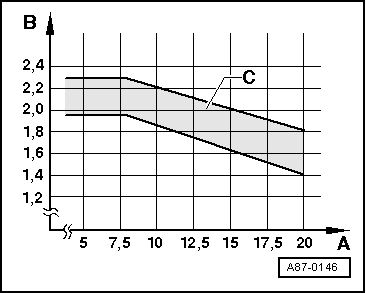Leon Mk1
|
|

|
| Possible deviation from specification | Possible cause of fault | Rectifying fault | ||||||||||||||||
| Too little refrigerant in circuit or expansion valve defective. |
| ||||||||||||||||
|
|
 Note!
Note!
|
| Possible deviation from specification | Possible cause of fault | Rectifying fault | ||||||||||||||||||||||||
|
|
|
 Note!
Note!
|
| Possible deviation from specification | Possible cause of fault | Rectifying fault | ||||||||||||||||||||||||
|
|
|
 Note!
Note!| When this fault occurs, always renew receiver. |
| Possible deviation from specification | Possible cause of fault | Rectifying fault | ||||||||||||||||||||||||||
|
|
|
 Note!
Note!| If the air conditioning system is still not operating correctly when the test is repeated, refit the expansion valve and flush the refrigerant circuit with compressed air and nitrogen. Then renew the air conditioner compressor and receiver. |
| Possible deviation from specification | Possible cause of fault | Rectifying fault | ||||||||||||
|
|
|
| Possible deviation from specification | Possible cause of fault | Rectifying fault | ||||||||||||||
|
|
|
 Note!
Note!
|
| Possible deviation from specification | Possible cause of fault | Rectifying fault | ||||||||
| Too much refrigerant in the circuit. |
| ||||||||
|
 Note!
Note!| Overfilling with refrigerant oil can occur if the refrigerant oil level was not checked after the air conditioner compressor was renewed. |
